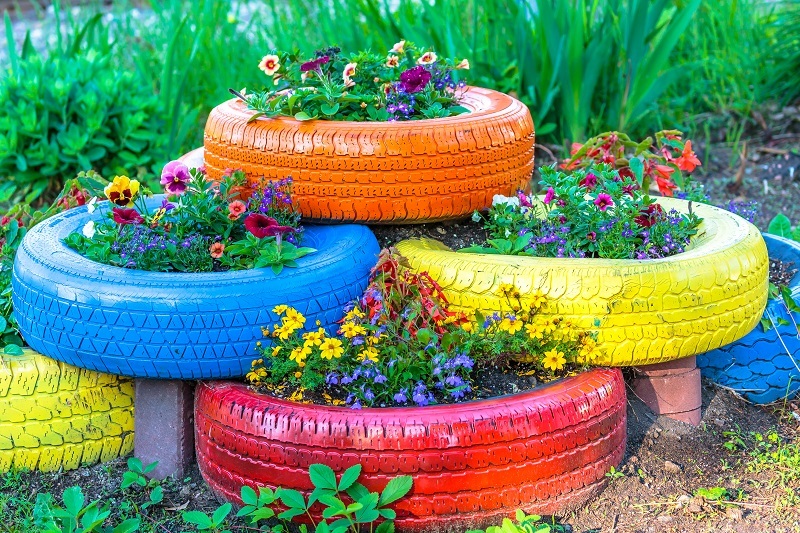7 Things You Never Knew About Tulips That Will Surprise You
Posted on 22/08/2025
7 Things You Never Knew About Tulips That Will Surprise You
Tulips have long been celebrated for their vibrant colors and elegant form, making them a favorite in gardens and bouquets around the world. But beneath their captivating beauty lies a world of fascinating secrets and rich history. In this comprehensive guide, we uncover 7 little-known facts about tulips that are sure to astonish even the most devoted flower enthusiasts. If you've always admired these stunning blooms, prepare to discover the most intriguing tulip facts that will forever change the way you see this iconic flower.

1. Tulips Were Once Worth More Than Gold
The Fascinating Story of Tulip Mania
When you think of valuable commodities, gold or diamonds likely come to mind. However, in the 17th century, tulips became a symbol of extreme wealth and status in the Netherlands, sparking a financial phenomenon known as Tulip Mania.
- Tulip bulbs were traded for astronomical prices during the Dutch Golden Age.
- At the height of Tulip Mania in 1637, a single rare tulip bulb could cost as much as a canal house in Amsterdam.
- People of all classes got involved, from aristocrats to common laborers, buying and selling bulbs on speculation.
- The bubble burst dramatically, resulting in financial ruin for many and marking one of the world's first recorded economic bubbles.
This incredible event shows just how much influence tulips once wielded--not just in gardens, but in global economic history!
2. Tulips Are Not Originally From Holland
Exploring the True Origins of the Tulip Flower
Although the Netherlands is famous for its breathtaking tulip fields, tulips did not originate there. In fact, tulips are native to a very different region:
- Tulips originated from Central Asia, specifically around the Tien Shan and Pamir mountains.
- The flowers were first cultivated by the Turkish Ottoman Empire in the 10th century.
- The word "tulip" is believed to have come from the Turkish word for "turban," reflecting the shape of the flower.
It wasn't until the 16th century that tulips made their way to the Netherlands, where they quickly became a symbol of Dutch culture. The country's cool climate and sandy soil were perfect for growing tulips, and the rest, as they say, is history.
3. Tulip Colors Hold Their Own Special Meanings
The Secret Language of Tulip Flowers
Did you know that the color of a tulip can convey its own unique message? Throughout history, different colored tulips have carried distinct meanings in flower symbolism and the language of flowers.
- Red Tulips symbolize true love and passion. They are a popular choice for romantic occasions.
- Yellow Tulips represent cheerful thoughts and sunshine, making them a bright, happy gift for friends.
- White Tulips stand for forgiveness, purity, and new beginnings.
- Purple Tulips convey royalty, elegance and admiration.
- Pink Tulips are often associated with affection, caring, and good wishes.
- Variegated or Striped Tulips symbolize beautiful eyes and intrigue.
Whether you're sending a message of love or friendship, there's a tulip variety to suit every sentiment. Their colorful spectrum makes tulips a meaningful choice for any occasion.
4. Tulips Inspired Groundbreaking Art and Literature
The Artistic Legacy of the Tulip Flower
Tulips are not just botanical wonders--they have also had a profound impact on the world of art and literature. The elegant shape and vivid colors of tulip flowers have been a favorite subject for centuries.
- Dutch Golden Age painters such as Jan Brueghel, Rachel Ruysch, and Rembrandt frequently featured tulips in still-life masterpieces.
- The mesmerizing beauty of tulips inspired many Ottoman Empire designs--appearing on ceramics, fabrics, and palatial architecture.
- In modern times, tulips are featured in poems, novels, and even music--symbolizing themes of love, transience, and beauty.
From the lush fields of Holland to the canvases of master painters, tulips have sparked creativity across generations, making them one of the most artistically significant flowers in history.
5. Not All Tulips Are Safe to Eat - Some Are Toxic!
The Surprising Truth About Tulip Toxicity
With their delicate petals, it might be tempting to think of tulip flowers as harmless. However, tulip bulbs and plants can be toxic--for both humans and pets.
- All parts of the tulip plant contain tulipalin A and B--compounds that can cause irritation and stomach upset if ingested.
- The bulbs are especially toxic and should never be mistaken for onions or edible bulbs.
- Pets, particularly cats and dogs, can experience vomiting, drooling, and other symptoms if they chew on tulip plants.
While there are stories of people eating tulip bulbs during times of famine, especially during World War II in the Netherlands, this should only ever be a last resort and under expert guidance. It's best to enjoy the beauty of tulips strictly as ornamental plants!
6. Tulips Are Surprisingly Hardy and Easy to Grow
Secrets to Successful Tulip Gardening
If you've ever dreamed of a spring garden bursting with color, tulip plants are a must-have. Contrary to their delicate appearance, tulips are remarkably resilient and well-suited for a variety of climates.
- Tulips thrive in well-drained soil and prefer a spot with full or partial sun.
- Most tulip species are cold-hardy, requiring a winter chilling period to bloom beautifully in spring.
- Tulip bulbs should be planted in the fall, around 6-8 inches deep for optimal results.
- Once established, tulips need minimal care--simply water regularly and avoid overwatering.
With hundreds of cultivars to choose from, you can easily find tulip types that match your garden design, climate, and color preferences. From bold single-color blooms to intricate parrot and fringed varieties, there's a tulip for everyone.
7. There Are Over 3,000 Tulip Varieties Worldwide!
Discover the Astonishing Diversity of Tulips
If you thought tulips were limited to a handful of common colors, prepare to be amazed. There are more than 3,000 registered tulip varieties cultivated around the world today, each with its own unique charm.
- Tulip flowers come in every shade imaginable--from pure white to almost black, and even multicolored streaks.
- Tulips are classified into 15 different groups, such as Darwin Hybrid Tulips, Triumph Tulips, Fringed Tulips, and Parrot Tulips, each with distinctive shapes, blooming times, and sizes.
- Some specialty tulips, like 'Rembrandt' and 'Queen of Night', are coveted by collectors worldwide for their rarity and unusual features.
- Tulips have even been bred to bloom at different times of spring, allowing for months of color in a single garden!
The incredible diversity of tulip varieties guarantees that you'll never run out of new and fascinating blooms to grow or admire. Whether you love classic reds or quirky parrot-shaped petals, there's always something new to discover in the world of tulips.

Bonus: Amazing Festivals and Facts About Tulips
- Keukenhof Gardens in the Netherlands is the world's largest tulip garden, boasting over 7 million bulbs in bloom every spring.
- The Canadian Tulip Festival in Ottawa celebrates the Netherlands' gift of tulip bulbs to Canada as thanks for sheltering the Dutch royal family during World War II.
- Tulips have their own official day in many countries--like National Tulip Day in the Netherlands, marking the start of the tulip season each January.
Conclusion: Why Tulips Deserve a Place in Your Heart and Garden
Tulips are so much more than just another pretty spring flower. From their dramatic role in economic history to their rich symbolism and incredible variety, tulips truly captivate the imagination. They're not only iconic blooms of the Netherlands but also global symbols of love, hope, and renewal.
By adding tulips to your garden or home, you're embracing a living piece of history that has inspired emperors, artists, and entire cultures. With their easy care, dazzling colors, and fascinating backstory, tulips continue to enchant flower lovers across the world.
Now that you know the seven surprising things about tulips, why not start your own tulip journey this spring? Whether you're an avid gardener or simply a fan of beautiful blooms, tulips are sure to surprise and delight for years to come.
Explore more about tulip varieties, their history, and how to grow stunning tulip flowers at home. Share this article if you've learned something new about the fascinating world of tulips!
Latest Posts
The Mood Magic of Plants: Enhancing Life Through Flowers
Ways to Keep Your Poinsettias Lush and Alive
7 Things You Never Knew About Tulips That Will Surprise You





